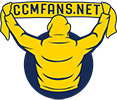dibo
Well-Known Member
To get away from private ownership, there are basically two alternatives.My issue with the post above is the bit about the clubs "true owners" the fans.
Until fans are allowed to buy proper equity and get representation, that can never happen.
One is a membership model where the company would be converted to one limited by guarantee and all of us members are entitled to a vote for the Board. That really doesn't suit clubs in the A-League, at least not at the moment. The reason is down to cashflow - A-League clubs burn cash in a way that NRL and AFL clubs don't - their grants and other equalisation measures tend to keep them afloat (on average) and they've had a lot more time to build up an asset base to act as ballast against bad years. New clubs coming in get rivers of gold to get them over their establishment period - both Gold Coast and GWS in the AFL have had squillions tipped in by the governing body.
Our governing body doesn't have the cash to do that, so the private owners have to kick in.
Compared to our present situation where a private owner is the one who tips in the shortfall, the membership would have to cover it through increased dues etc. On a $1m annual loss, you're talking about a further $200 or so per member just to keep the doors open. That's tantamount to doubling most people's memberships or doubling member numbers at current prices. And that's to stay where we are. To get ahead (i.e. spend more on players and backroom staff) we might need to raise twice that or more.
The other is an equity model like the Green Bay Packers (see http://en.wikipedia.org/wiki/Green_Bay_Packers):
The Packers are the only community-owned franchise in American professional sports. Rather than being the property of an individual, partnership, or corporate entity, they are held in 2014 by 360,584 stockholders. No one is allowed to hold more than 200,000 shares; approximately 4% of the 5,011,557 shares currently outstanding. It is this broad-based community support and non-profit structure which has kept the team in Green Bay for nearly a century in spite of being the smallest market in all of North American professional sports.
The last stock sale was priced at $250 per share.
Applied to our circumstances, to cover a recurrent $1m loss, we're going to need to raise $1 million to get to 2017 with wind in the sails, or we need to sell 4,000 shares. That's about two shares per three members. And again, that's to hold station, not to get ahead.
Remembering that many of our members are kids, we might be talking about somewhere up around 4 shares per adult member.
Football clubs eat money, and once the new TV deal kicks in and all the other boats are raised as well, we're not going to be guaranteed to live in the land of milk and honey for evermore, so the first equity offering won't be the last.
*Excess* demand will therefore be limited because there is extra stock being issued, so you will be unlikely to grow the value of the share beyond inflation. They're not going to pay dividends, because they'll need to reinvest any cent they *do* make (if they ever make any).
Can you and all your mates even afford to drop $1,000 on something to make you feel good, where you know you'll get no return on your money, and in all likelihood the club will come knocking again in a couple of years?
It's one of those really nice warm fuzzy ideas that has a few pretty major practical difficulties to it.







